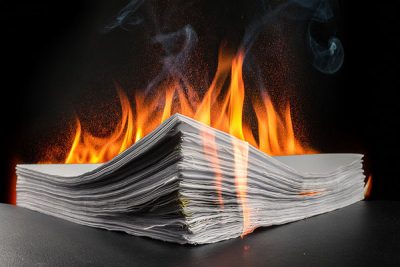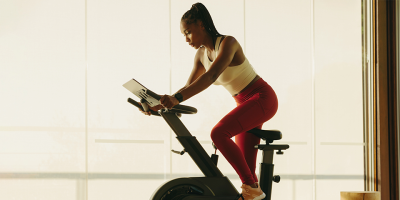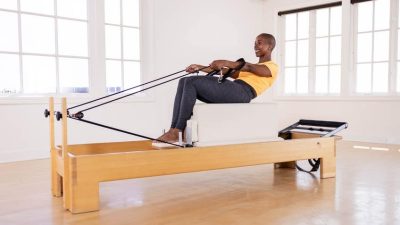
Most people understand the general concept behind losing weight, which is that you need to burn calories. However, not many people fully understand how to burn calories or what calories even are. Even if you know you need to eat less, how much less, and what does it look like?
That’s what this article is all about. Instead of just telling you to burn calories, I’m going to show you how to burn calories. Even better, I’ll show you how to burn 500 extra calories a day.
Why is that important? Read on, and you’ll find out!
Table of Contents:
- What Are Calories?
- Does Burning Calories Burn Fat?
- An Explanation Of Burning 500 Calories A Day
- 7 Workouts For Burning 500 Calories A Day
- How To Burn Calories With Food
What Are Calories?
Step one is to answer what calories are. Simply put, a calorie is a unit of measurement that measures the energy needed to raise the temperature of 1kg of water by 1°C.
This means that a calorie simply measures energy.
Does Burning Calories Burn Fat?
Now that we know what calories are, let’s address the relationship between burning calories and fat loss. At first glance, you might assume that they’re basically the same thing. But that is actually incorrect.
The truth is that you burn calories all day long, even when you gain fat! In fact, you can burn fat while you gain fat! Let me explain.
BMR And TDEE
As mentioned above, your body burns calories all day. We usually think of things like running or weight lifting when we hear “burning calories,” and while we do burn calories with increased activity, our bodies require energy simply to exist and support its many processes.
This includes physiological processes such as:
- Respiration
- Thinking
- Digestion
- Reading this article
In fact, most calories burned throughout the day come from basic survival functions. The amount of calories burned here is known as your BMR.
On top of your BMR, you have 3 other main forms of calorie burn:
- Exercise: These are activities you perform with the intent of fitness, including losing weight, building muscle, improving performance, and sports.
- NEAT: NEAT stands for non-exercises activity thermogenesis
- TFE: TFE, or thermal food effect, is the number of calories you burn digesting and absorbing food.
The total sum of calories burned is known as your TDEE.
Energy Balance Dictates Weight Gain Or Weight Loss
If you eat fewer calories than your daily energy expenditure, it will put you in a negative calorie balance, meaning your body must look for other sources of fuel. In this situation, your body will break down tissue for extra energy from either fat or muscle. In addition, your negative calorie balance determines how much weight you lose and how quickly you lose it.
Fuel Sources:
Your body’s primary sources of fuel are carbs and stored fats. Carbs are stored in your muscle as glycogen are the primary energy source for an intense workout where your body needs fuel fast.
On the other hand, stored fat is actually the largest contributor to energy as it’s the preferred source at rest and during low-intensity exercises. To be clear, this can be for things like running if your heart rate is about 70{32c02201c4e0b91ecf15bfd3deecd875caca8b9615db42cfd45ce3d8de8d0829} max heart rate or less. It’s more complicated than this as your body uses both, but really, it just favors one or the other.
Regardless, the main point is that when you burn calories, it may be from fat or carbs. When you exercise, there’s actually a greater chance it’s from carbs. This doesn’t matter, as this just means you’ll burn fat more later. It will all even out.
Why 500 Calories A Day?
While we all want to lose weight fast, going too fast can have less than optimal results. Above we spoke about how fats and carbs are the body’s preferred source of fuel. However, if we place too great of a demand on our bodies, they can resort to breaking down muscle tissue for fuel. And we want to build muscle, not lose it.
Therefore, in order to get to a healthy weight while mitigating any muscle loss, you’ve got to find the calorie-burning sweet spot, which is around a 500-caloric daily deficit.

An Explanation Of Burning 500 Calories A Day
Before we get into the details of these calorie-burning workouts, I want to explain what I mean when I say “burn 500 calories a day.” You are already burning more than 500 calories daily, so, in that context, the mission is accomplished. What I mean when I say “burn an extra 500 calories a day” is how to burn an extra 500 calories on top of what you’re already burning.
In addition, I hope to give you some pointers, tips, and hacks with this information. Let’s dig in.
How Long Does It Take To Burn 500 Calories?
We also want you to keep in mind that your body weight is going to affect how many calories you burn when working out. For example, a larger person will burn more calories than a smaller person doing the same workout as they must use more energy.
One other question you may have is how long burning 500 calories a day takes. That depends on your intensity and weight, but the bottom line is this: If you have one hour, you have enough time.
7 Workouts To Burn 500 Calories A Day
Here are some workouts to burn 500 calories a day.
1) Steady State Cardio Workout:
While this may not be the most intense workout, steady-state cardio is an awesome way to burn calories. One benefit it has over other methods is you can definitely hit your desired calorie burn. This is because you exercise at a relatively easy pace, meaning you can maintain it for quite awhile.
When performing cardio workouts like high-intensity interval training, there’s a very real chance you will fatigue before you get to 500 calories. With a LISS cardio workout, you set the speed to what you can manage and go.
One hour of cycling on a stationary bike or jogging (or even brisk walking up a steep incline) will put the majority of people over 500 calories. Plus, you can also turn these into a fartlek workout if you feel up to it and throw in random intense bouts as you see fit.
2) HIIT Workouts:
Speaking of high-intensity interval training, HIIT is a great method for weight loss if you can handle it. HIIT is highly demanding as it requires repeated bouts of max effort with minimal recovery. These recovery periods don’t let you fully recover, which is what makes them so hard.
In reality, I don’t feel this is the best way to burn 500 calories. While they can burn calories quickly, you may fatigue before you get to 500 calories. The main benefit of these is that they’re an efficient way to improve your cardiovascular system.
Check out these HIIT Treadmill Workouts for some awesome programming routines!
3) Sprint Interval Training:
Another form of high-intensity training is simply called “interval training.” The main difference is that the recovery periods are longer, so you can fully recover, or at least get closer to a full recovery.
The main goal of interval training is to allow true max efforts every work interval. Think of interval training as performing powerlifting with a 4-minute rest period, and HIIT being more akin to EMOM work.
Regardless, sprint interval training is a great way to burn calories. Just know it will take a bit of time to get to 500.
4) EMOMs:
Speaking of EMOMs…
EMOMS stands for “every minute on the minute.” This training method will assign a workload to be completed every minute. When the clock starts, you perform the prescribed amount of reps of the chosen exercise. Once you’re done, you will put the implement down and then rest until the clock hits the next minute.
For example, let’s say you’re going to do an EMOM performing 3 reps of 85{32c02201c4e0b91ecf15bfd3deecd875caca8b9615db42cfd45ce3d8de8d0829} of your 1RM back squat for 5 minutes. Once you load the barbell and start, it may look something like this.
- Start at 0:00: Your 1st set takes 20 seconds, so you have 40 seconds of rest.
- 1:00: Perform your 2nd set, which takes 25 seconds, so you have 35 seconds to rest.
- 2:00: Perform your 3rd set, which takes 28 seconds, so you have 32 seconds to rest.
- And so on…
While the first couple of sets may feel easy, your rest is short and doesn’t allow for recovery. Therefore, the fatigue gradually builds, making each set harder. At the same time, the set lasts longer, giving you a shorter rest period.
It’s hard to say how much energy is spent in an EMOM as so many factors exist. In order to get the most calorie burn, use big, compound exercises (this is what’s usually used anyway) with lighter weights, performing the routine for 10 minutes.
A good general rule is to perform around half the reps of your max sets with a given weight. With the above example, you should be able to do 6 reps with 85{32c02201c4e0b91ecf15bfd3deecd875caca8b9615db42cfd45ce3d8de8d0829} 1RM. However, every person will differ depending on their strength and anaerobic endurance.
If it’s your first time, do not try to push it, or you will fail. Start with a weight you think is pretty easy, and then go a little lower. This will ensure you get in all the reps for more calories and let you get a feel for them.
Check out our Ultimate Beginner’s Guide To EMOM Workouts to get started!
5) German Volume Training (GVT):
German volume training, or GVT, is simply a structured EMOM. To do these, you perform a 10-minute EMOM using 50{32c02201c4e0b91ecf15bfd3deecd875caca8b9615db42cfd45ce3d8de8d0829} of your 1RM for 10 reps. In total, this will get you 100 reps in only two minutes.
If you do the math, that’s a ton of volume in a short amount of time, hence the name. For example, let’s pretend you want to do a bench press in which you have a 200lb 1RM. This means 50{32c02201c4e0b91ecf15bfd3deecd875caca8b9615db42cfd45ce3d8de8d0829} would be 100 lbs. Your total volume would look like this:
This will burn a ton of calories as volume measures the amount of work you do. Work requires energy, so the more volume you do, the more calories you burn.
Now, you don’t want to completely negate true strength training by making GVT your primary training method all the time. However, you could use it for a smaller compound set toward the end of a workout session.
For example, you could use it on your pressing day. And, you could use a narrow-grip bench press instead of a traditional bench press. This would allow you to still get in your strength training at the beginning of the session while getting a high-calorie burn exercise at the end.
At the same time, you’re still getting a ton of volume for muscle hypertrophy, so it meshes well and will still train all intended variables.
6) Barbell Complex:
The barbell complex is another awesome yet underused training method. It’s a great form of metabolic conditioning that will generate a high-calorie burn and improve overall conditioning.
While there are infinite ways to set up a barbell complex, you’ll always follow the same basic structure. You perform a series of exercises back to back without letting go of the barbell or resting it on the ground. The general format has you perform 10 reps of 4-5 exercises, meaning one set has 40-50 reps.
The key to barbell complexes is to line up the barbell exercises, so they flow easily into one another. For example, here’s a popular complex:
- Deadlift x 10
- Bent-Over Row x 10
- Front Squat x 10
- Push Press x 10
- Back Squat x 10
As you can see, the exercises alternated between the upper body and the lower body. In addition, you only had to clean it once, from the bent-over row to the front squat. While most complexes are done with barbells, you can also use kettlebells or even dumbbells The key is that you move the entire time.
7) Burn 500 Calories Using NEAT:
Another tool at your disposal is to increase your NEAT. Remember, these are the calories you burn through physical activity that’s not exercising or sports-related.
NEAT is probably the most overlooked variable in weight loss, likely because people don’t realize how many calories they can burn by adding extra walks here and there throughout the day. A great choice is riding a bike when you have local errands. These trips can add up fast.

How To Burn Calories With Nutrition
While this article is about “burning calories,” sometimes the best way is just not to eat so many calories. In fact, you’d probably be surprised how easy it is to cut a few hundred calories from your diet by making minimal changes.
To be clear, these are more or less “hacks” rather than specific diet tips, as you should always follow a balanced diet. For more information on balanced eating, check out our article on the 80 20 Rule Diet.
1) Replace Caloric Drinks With Water:
The easiest fat-burning hack there is to simply drink more water. By this, I mean stop drinking things like juice or soda. In fact, even sports drinks provide unneeded calories. There’s definitely a space for sports drinks, but your average trainee doesn’t need it.
Many of these drinks have 90-150 calories, mostly from sugar. If you swapped out 2 or 3 of them a day, you’d cut 250-400 calories right there.
2) Swap Out Foods:
One incredibly easy way to cut calories from your diet is to do “food swaps.” This is when you keep the same diet as before but simply swap out food items. For example, milk is perhaps the one liquid I would suggest apart from water. It’s a good source of protein that packs a ton of nutrients and is also very hydrating.
However, it can have a lot of calories.
The good thing is that numerous milk alternatives offer significantly lower calories. While you may need to get used to the taste, you can cut upwards of 80 calories per serving, choosing skim over full-fat, or trying almond milk instead.
Other swap ideas include:
- Swap rice for cauliflower rice.
- Have a cauliflower crust pizza.
- Eat rolled oats rather than cereal.
- Swap bread for a low-calorie wrap.
- Use extra-lean ground beef instead of ground beef.
- Try turkey sausage or ground turkey.
You get the idea. These easy switches don’t require any extra planning other than swapping them out.
3) Eat More Protein:
Eating more protein can actually help you burn calories. Above we spoke about TFE, thermal food effect, which is how many calories you burn digesting and absorbing food.
Protein has the highest TFE of all 3 macros. Think about it. What would be harder to digest; a big steak or some oil? What this means is that if you ate 100 calories of protein and 100 calories of carbs or fat, you would burn more calories eating the protein!
The effect isn’t massive but studies have clearly shown eating high protein is very effective in weight loss. Some studies using very high protein intake (4.0g/kg) showed you could eat a caloric excess and not gain weight¹!
Now, I’m not suggesting you eat that much but stick to the higher amounts of at least 1.8g per kilogram of body weight daily. Check out our High Protein Meal Plan for ideas on how to increase your daily protein!

4) Take a fat burner:
Taking a fat burner can be an easy way to rev your metabolism up and increase your daily burn. And, it works best when you pair it with the other strategies I’ve covered in this article.
I recommend checking out PhenQ, an awesome fat burner formulated by nutrition specialists that contains 100{32c02201c4e0b91ecf15bfd3deecd875caca8b9615db42cfd45ce3d8de8d0829} natural premium ingredients.

PhenQ is a natural weight management system that targets 5 key areas of metabolic health to help shed excess fat, crush cravings, and support natural energy…
And for more great options, check out the 9 Best Fat Burners For Women and the Best Fat Burners For Men!
Burn 500 Calories Using Multiple Strategies
Burning calories is a lot like making money in that having multiple streams of calorie-burning mechanisms is good. It’s much easier to hit that 500 goal if you’re exercising your entire body and building lean muscle, eating right, taking a fat burner, and moving more.
For example, you can skip out on the coke, run 3K (great for cardiovascular fitness), throw in a long circuit set, and take your dog for an extra long walk. This would easily put you over the 500-calorie mark and likely seem easier than going all in at the gym for 2 hours each day (and you get more time with your dog!).
The point is that it’s much easier to burn an extra 500 calories a day by utilizing multiple systems. Exercise alone, whether cardio or lifting weights, has been shown to help effectively lose weight as it burns more calories. On the other hand, diet alone is also an effective weight loss tool as you eat fewer calories.
However, combining both of these affects your total energy balance from both sides, decreasing calorie intake and increasing calorie burn.
Personally, my favorite method is to pair up some steady-state cardio with EMOMs during weight training. Finally, tweak your calorie consumption, do a few food swaps, and you’re golden.

How Can You Burn 500 Calories A Day? A Summary
As you see, there are many ways to burn 500 calories. I hope this shows you how easy it really is to knock out 500 extra calories a day. My advice is to find what works best for you, as burning 500 calories is burning 500 calories, and it doesn’t matter if these came from HIIT, LISS, other cardio exercises, weight training, or diet.
Find the healthy lifestyle habits you’re most likely to stick with, and do them consistently. Work out, watch your diet, and move more to get into a calorie deficit, and you’ll be well on your way to sustainable weight loss.
Looking for great calorie-burning workouts? Check out the Best Elliptical Workout For Weight Loss and the Best Treadmill Workouts For Weight Loss! Interested in taking a fat burner to boost your weight loss efforts? Head to our articles on the Best Fat Burners For Women and the Best Fat Burners For Men!

References:
-
Antonio J, Peacock CA, Ellerbroek A, Fromhoff B, Silver T. The effects of consuming a high protein diet (4.4 g/kg/d) on body composition in resistance-trained individuals. Journal of the International Society of Sports Nutrition. 2014. doi:10.1186/1550-2783-11-19






